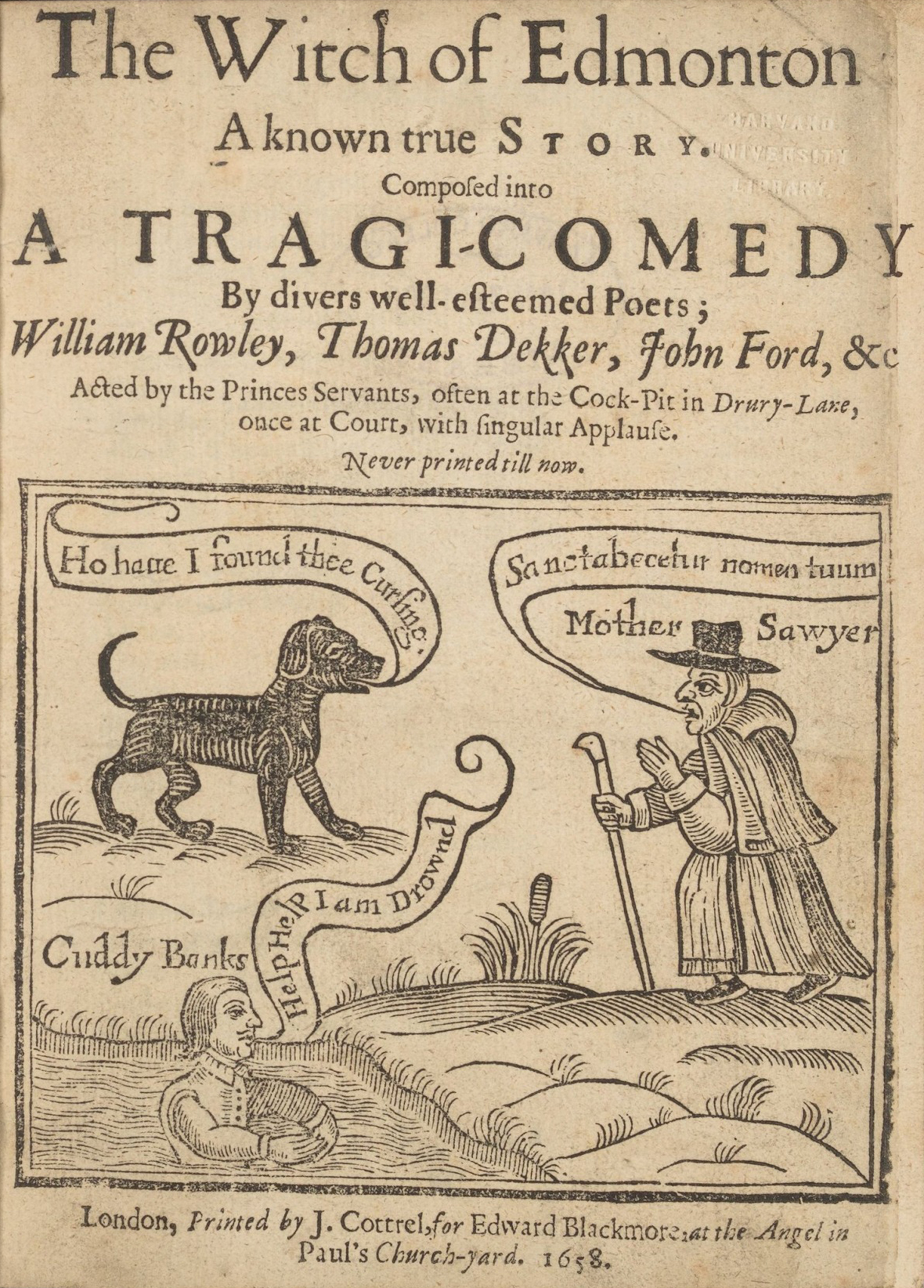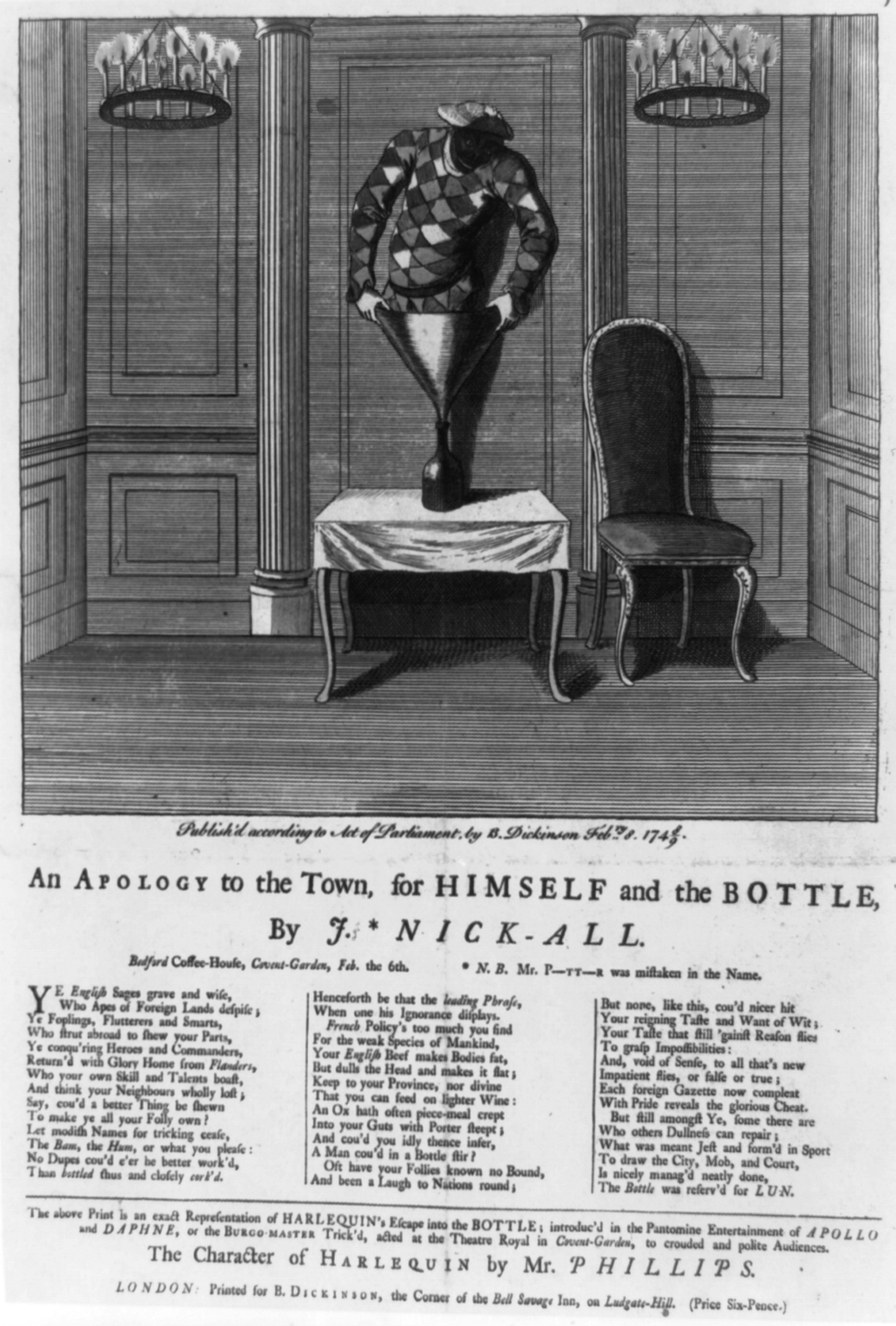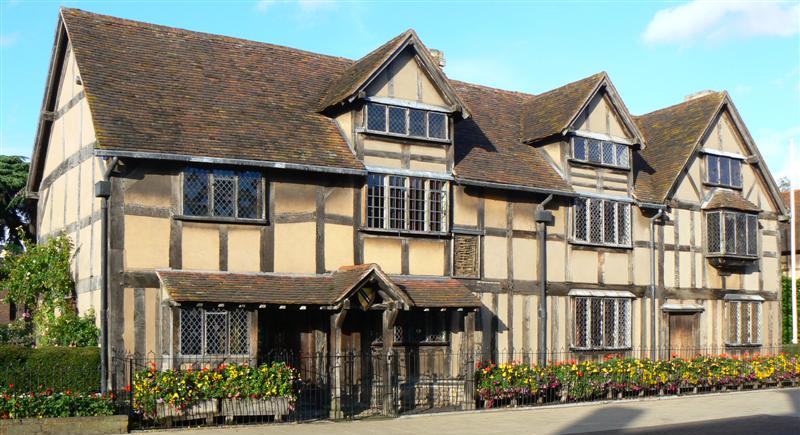|
The Spanish Curate
''The Spanish Curate'' is a late Jacobean era stage play, a comedy written by John Fletcher and Philip Massinger. It premiered on the stage in 1622, and was first published in 1647. Date and source The play was licensed for production by Sir Henry Herbert, the Master of the Revels, on 24 October 1622. The dramatists' source for their plot, the Spanish novel ''Gerardo, the Unfortunate Spaniard'' by Gonzalo de Céspedes y Meneses, was first published in English, in a translation by Leonard Digges, earlier in the same year. Performance and publication ''The Spanish Curate'' was acted by the King's Men, and was performed by that troupe at Court on St. Stephen's Day, 26 December 1622. The partial cast list of the premiere production, published in the second Beaumont and Fletcher folio of 1679, includes Joseph Taylor, William Ecclestone, John Lowin, Thomas Pollard, Nicholas Tooley, and Robert Benfield. The play received its initial publication in the first Beaumont and F ... [...More Info...] [...Related Items...] OR: [Wikipedia] [Google] [Baidu] |
|
 |
Literature In English
English literature is literature written in the English language from United Kingdom, its crown dependencies, the Republic of Ireland, the United States, and the countries of the former British Empire. ''The Encyclopaedia Britannica'' defines English literature more narrowly as, "the body of written works produced in the English language by inhabitants of the British Isles (including Ireland) from the 7th century to the present day. The major literatures written in English outside the British Isles are treated separately under American literature, Australian literature, Canadian literature, and New Zealand literature." However, despite this, it includes literature from the Republic of Ireland, "Anglo-American modernism", and discusses post-colonial literature. ; See also full articles on American literature and other literatures in the English language. The English language has developed over the course of more than 1,400 years. The earliest forms of English, a set of Angl ... [...More Info...] [...Related Items...] OR: [Wikipedia] [Google] [Baidu] |
|
Robert Benfield
Robert Benfield (died July 1649) was a seventeenth-century actor, noted for his longtime membership in the King's Men in the years and decades after William Shakespeare's retirement and death. Nothing is known of Benfield's early life. He was most likely with the Lady Elizabeth's Men in 1613, and acted in their productions of Fletcher's '' The Coxcomb'' and the Fletcher/ Massinger play '' The Honest Man's Fortune'' in that year. Benfield soon joined the King's Men, possibly to replace William Ostler, who died unexpectedly in December 1614. He acted in the company's production of John Webster's ''The Duchess of Malfi'' c. 1621. He was a shareholder in the company by 1619, when he is listed in the renewed patent for the King's Men issued in that year. Benfield also eventually became a sharer in both the Globe and Blackfriars theatres, but only after a conflict: in 1635 he was one of three King's Men (the others were Thomas Pollard and Eliard Swanston) who petitioned the Lord C ... [...More Info...] [...Related Items...] OR: [Wikipedia] [Google] [Baidu] |
|
|
The Changeling (play)
''The Changeling'' is a Jacobean tragedy written by Thomas Middleton and William Rowley. Widely regarded as being among the best tragedies of the English Renaissance, the play has accumulated a large amount of critical commentary. The play was licensed for performance by Sir Henry Herbert, the Master of the Revels, on 7 May 1622, and was first published in 1652 by the bookseller Humphrey Moseley. Authorship The title page of the first edition of ''The Changeling'' attributes the play to Middleton and Rowley. The division of authorship between the two writers was first delineated by Pauline Wiggin in 1897, and is widely accepted. David Lake, in his survey of authorship problems in the Middleton canon, summarises the standard division of shares this way: : Middleton – Act II; Act III, scenes i, ii, and iv; Act IV, scenes i and ii; Act V, scenes i and ii; : Rowley – Act I; Act III, scene iii; Act IV, scene iii; Act V, scene iii. Lake differs from previous commentators only in ... [...More Info...] [...Related Items...] OR: [Wikipedia] [Google] [Baidu] |
|
 |
William Rowley
William Rowley (c. 1585 – February 1626) was an English Jacobean dramatist, best known for works written in collaboration with more successful writers. His date of birth is estimated to have been c. 1585; he was buried on 11 February 1626 in the graveyard of St James's, Clerkenwell in north London. (An unambiguous record of Rowley's death was discovered in 1928, but some authorities persist in listing his year of death as 1642.) Life and work Rowley was an actor-playwright who specialised in playing clown characters (that is, characters whose function is to provide low comedy). He must also have been a large man, since his forte lay specifically in fat-clown roles. He played the Fat Bishop in Thomas Middleton's '' A Game at Chess'', and Plumporridge in the same author's ''Inner Temple Masque''. He also wrote fat-clown parts for himself to play: Jaques in ''All's Lost by Lust'' (a role "personated by the Poet", the 1633 quarto states), and Bustopha in ''The Maid in the Mill'' ... [...More Info...] [...Related Items...] OR: [Wikipedia] [Google] [Baidu] |
|
Primogeniture
Primogeniture ( ) is the right, by law or custom, of the firstborn legitimate child to inheritance, inherit the parent's entire or main estate (law), estate in preference to shared inheritance among all or some children, any illegitimate child or any collateral relative. In most contexts, it means the inheritance of the firstborn son (agnatic primogeniture); it can also mean by the firstborn daughter (matrilineal primogeniture). Description The common definition given is also known as male-line primogeniture, the classical form popular in European jurisdictions among others until into the 20th century. In the absence of male-line offspring, variations were expounded to entitle a daughter or a brother or, in the absence of either, to another collateral relative, in a specified order (e.g. male-preference primogeniture, Salic primogeniture, semi-Salic primogeniture). Variations have tempered the traditional, sole-beneficiary, right (such as French appanage) or, in the West since ... [...More Info...] [...Related Items...] OR: [Wikipedia] [Google] [Baidu] |
|
 |
Royal Opera House
The Royal Opera House (ROH) is an opera house and major performing arts venue in Covent Garden, central London. The large building is often referred to as simply Covent Garden, after a previous use of the site. It is the home of The Royal Opera, The Royal Ballet, and the Orchestra of the Royal Opera House. The first theatre on the site, the Theatre Royal (1732), served primarily as a playhouse for the first hundred years of its history. In 1734, the first ballet was presented. A year later, the first season of operas, by George Frideric Handel, began. Many of his operas and oratorios were specifically written for Covent Garden and had their premieres there. The current building is the third theatre on the site, following disastrous fires in 1808 and 1856 to previous buildings. The façade, foyer, and auditorium date from 1858, but almost every other element of the present complex dates from an extensive reconstruction in the 1990s. The main auditorium seats 2,256 people ... [...More Info...] [...Related Items...] OR: [Wikipedia] [Google] [Baidu] |
 |
Theatre Royal, Drury Lane
The Theatre Royal, Drury Lane, commonly known as Drury Lane, is a West End theatre and Grade I listed building in Covent Garden, London, England. The building faces Catherine Street (earlier named Bridges or Brydges Street) and backs onto Drury Lane. The building is the most recent in a line of four theatres which were built at the same location, the earliest of which dated back to 1663, making it the oldest theatre site in London still in use. According to the author Peter Thomson, for its first two centuries, Drury Lane could "reasonably have claimed to be London's leading theatre". For most of that time, it was one of a handful of patent theatres, granted monopoly rights to the production of "legitimate" drama in London (meaning spoken plays, rather than opera, dance, concerts, or plays with music). The first theatre on the site was built at the behest of Thomas Killigrew in the early 1660s, when theatres were allowed to reopen during the English Restoration. Initial ... [...More Info...] [...Related Items...] OR: [Wikipedia] [Google] [Baidu] |
|
King's Company
The King's Company was one of two enterprises granted the rights to mount theatrical productions in London, after the London theatre closure had been lifted at the start of the English Restoration. It existed from 1660 to 1682, when it merged with the Duke's Company to form the United Company. History On 21 August 1660, King Charles II granted Thomas Killigrew and Sir William Davenant each official permission in the form of a temporary "privilege" to form acting companies. Killigrew's King's Company fell under the sponsorship of Charles himself; Davenant's Duke's Company under that of Charles's brother, then the Duke of York, later James II of England. The temporary privileges would be followed later by letters patent, issued on 25 April 1662 in Killigrew's case, cementing a hereditary monopoly on theatre for the patent-holders.Milhous, p. 4. The first permanent venue for the King's Company was Gibbon's Tennis Court; in 1663, responding to competition from the Duke's Company ... [...More Info...] [...Related Items...] OR: [Wikipedia] [Google] [Baidu] |
|
 |
Samuel Pepys
Samuel Pepys (; 23 February 1633 – 26 May 1703) was an English diarist and naval administrator. He served as administrator of the Royal Navy and Member of Parliament and is most famous for the diary he kept for a decade. Pepys had no maritime experience, but he rose to be the Chief Secretary to the Admiralty under both King Charles II and King James II through patronage, diligence, and his talent for administration. His influence and reforms at the Admiralty were important in the early professionalisation of the Royal Navy. The detailed private diary that Pepys kept from 1660 until 1669 was first published in the 19th century and is one of the most important primary sources for the English Restoration period. It provides a combination of personal revelation and eyewitness accounts of great events, such as the Great Plague of London, the Second Dutch War, and the Great Fire of London. Early life Pepys was born in Salisbury Court, Fleet Street, London, on 23 Feb ... [...More Info...] [...Related Items...] OR: [Wikipedia] [Google] [Baidu] |
 |
English Restoration
The Restoration of the Stuart monarchy in the kingdoms of England, Scotland and Ireland took place in 1660 when King Charles II returned from exile in continental Europe. The preceding period of the Protectorate and the civil wars came to be known as the Interregnum (1649–1660). The term ''Restoration'' is also used to describe the period of several years after, in which a new political settlement was established. It is very often used to cover the whole reign of King Charles II (1660–1685) and often the brief reign of his younger brother King James II (1685–1688). In certain contexts it may be used to cover the whole period of the later Stuart monarchs as far as the death of Queen Anne and the accession of the Hanoverian King George I in 1714. For example, Restoration comedy typically encompasses works written as late as 1710. The Protectorate After Richard Cromwell, Lord Protector from 1658 to 1659, ceded power to the Rump Parliament, Charles Fleetwood an ... [...More Info...] [...Related Items...] OR: [Wikipedia] [Google] [Baidu] |
|
Cyrus Hoy
Cyrus Henry Hoy (February 26, 1926 – April 27, 2010) was an American literary scholar of the English Renaissance stage who taught at the University of Virginia and Vanderbilt University, and was the John B. Trevor Professor of English (emeritus, 1994) at the University of Rochester. He wrote and published on a wide range of topics in English literature, though he is best known for his works on William Shakespeare, Beaumont and Fletcher, and other figures in English Renaissance theatre. Probably his most frequently-cited work is his study of authorship problems in the Beaumont/Fletcher plays. Titled "The Shares of Fletcher and His Collaborators in the Beaumont and Fletcher Canon," it was published in seven annual issues of the journal ''Studies in Bibliography,'' published by the Bibliographical Society of the University of Virginia (1956–62). Hoy identified specific linguistic markers for individual dramatists, most notably a highly distinctive pattern of preferences for ... [...More Info...] [...Related Items...] OR: [Wikipedia] [Google] [Baidu] |
|
 |
William Shakespeare
William Shakespeare ( 26 April 1564 – 23 April 1616) was an English playwright, poet and actor. He is widely regarded as the greatest writer in the English language and the world's pre-eminent dramatist. He is often called England's national poet and the " Bard of Avon" (or simply "the Bard"). His extant works, including collaborations, consist of some 39 plays, 154 sonnets, three long narrative poems, and a few other verses, some of uncertain authorship. His plays have been translated into every major living language and are performed more often than those of any other playwright. He remains arguably the most influential writer in the English language, and his works continue to be studied and reinterpreted. Shakespeare was born and raised in Stratford-upon-Avon, Warwickshire. At the age of 18, he married Anne Hathaway, with whom he had three children: Susanna, and twins Hamnet and Judith. Sometime between 1585 and 1592, he began a successful career in London as an ... [...More Info...] [...Related Items...] OR: [Wikipedia] [Google] [Baidu] |